Agnes Farrer (nee’ Strong) was born in Hollow Lane, Kendal, Westmorland, UK on October 3, 1837. Kendal is an old town, complete with castle and Tudor nobility history. She married Roger Farrer, a farmer from Levens in the parish of Heversham, a few miles south of Kendal. I have no idea how they met. Note of interest: Roger’s father, Roger, owned a mill and was a maltster, and his father, also Roger, was a blacksmith. That explains my blacksmith genes. Other note of interest: Roger’s mother, Mary Stubbs, had a face that only a bulldog’s mother could love. I have proof.
I do know Roger and Agnes were baptised into the Mormon church in 1846 and emigrated to Utah and settled in Provo, a few blocks south of where my daughter currently lives while attending Brigham Young University. They had seven children, the fifth of which was my great grandmother, Mary Ettie Farrer, who married Walter Paxman Whitehead, an Englishman from Essex. They had my grandmother, Edith Agnes, who we all called Barna, a three year-old’s corruption of “Gramma.”
Barna was a fantastic cook. Not in the “all grandmothers are good cooks” sort of way, but compared to all cooks, period. She grew up in a family grocery store and was a butcher before she married Grampa. When she died, Grampa gave me her old Betty Crocker cookbook. The cookbook was worthless, really, but the little scraps of paper, recipe cards and torn sheets of notebook paper carry a lifetime of collected recipes.
When I was in college I spent a night or two a week at Ray and Barna’s. When I started courting Wife 1.2, she came with me, and also partook of many “little somethings” Barna threw together.
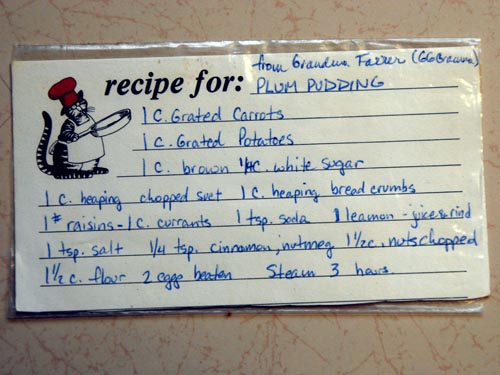
I copied this recipe more than 30 years ago as a teenager. I would spend a good deal of time visiting Ray and Barna in Springville, Utah, a long way from my California home. Their home was a place I loved to visit, and it was where Barna taught me to cook.
Plum pudding is an ancient dessert, going back to the sixteenth century. It’s not that sweet, as sugar was expensive enough, and the pudding is full of expensive items like raisins, currants, and nuts, not to mention fat in the form of beef suet. There are no plums in Agnes Strong Farrer’s plum pudding. And it’s not recognizable as pudding to Yankees. It’s sort of like the English Horn: it’s neither English, nor is it a horn.
The recipe has sat quietly in the recipe box for decades, until I walked into the local Presby church rummage sale they hold in their basement every few Saturdays. It’s a good place to pick up fun and cheap stuff, especially old ties, books, kitchen utensils and such. On that day I saw the plum pudding mold — 50 cents. When I bought it, the woman at the cash box said she had been wondering what that was for months. They thought it was a weird bundt pan, but it was way too old to be that. No one recognized it, or figured it was too much work to make a plum pudding.
The thing about old-school cooking is that you need old-school ingredients. While beef suet is not rare, it’s not something you grab off the shelf at Trader Joe’s. I asked the young butcher. He scratched his head and asked the old butcher, who knew where to find it. I didn’t follow him back there. You might be squeamish about using beef fat for a shortening, but it’s better for you than margarine and is pretty much tasteless.
Raisins and currents are easier.
It’s a weird dough…there’s no liquid except for the two eggs, so it’s a big crumbly mess until you work it a bit, and the sugar sucks moisture out of the carrots and potatoes. Then you cram it into the greased mold and keep shoving on it until it’s smooth-ish on top.
Plum puddings aren’t baked, they’re steamed for a long, long time. In the case of this one, it’s about three hours, so I had to set up a system that would allow for the size of the mold and still have enough room in the bottom of the pot for water. I set mason jar rings in the bottom and put an inverted perforated pie pan on those rings. It gave me about an inch or so of room for boiling water.
Next you wrap the pudding up in towels to keep the moisture from condensing on the top of the pudding and making it a gelatinous goo. One dishcloth did it. The I filled the tea kettle and put it on, so I could have boiling water to refill the reservoir every 30 minutes or so. I didn’t want this to run dry.
[Fast forward three hours].
I knew what it was going to look like, mostly, but it had been so long since I saw one come out of the steamer I had forgotten the details. I’ve been trying to think of the last time I saw this process and the outcome, and I think I was about 11 or 12. So yeah, a while.
I resisted the desire to pull the pudding before its time, with strong encouragement from Wife 1.2. I set it on the porch and waited until it was warmish. By flexing the mold slightly I could see it separating…yes. Sighs of relief. The idea of taking a chisel to the pudding was undesirable. But with a cup and then some of chopped beef suet, it has to be a pretty slippery pudding.
And so it was.
It tastes like I remember it. Without rum, brandy, or whiskey in the house I can’t make the traditional hard sauce, so I’m eating it naked, and it’s still pretty good. Barna did it with rum; not that abomination that is rum flavoring. Where she got rum I don’t know, because being the orthodox Mormon lady she was, I’m sure she never set foot in a liquor store. I’m sure she sent Ray, who was semi-orthodox Mormon; he didn’t drink it, but he had no problem buying it for cooking purposes. I’m like Grampa…you can’t make rum cake without rum. Otherwise it’s just plain old cake.
I’m fortunate as I have a lot of family histories and lore; in pictures and diaries, in stories passed down to me by Ray and Barna. I’m not sure how many people these days know anything about their great-great-grandparents. What I know about the lady who brought me this recipe across the Atlantic from Westmoreland is substantial, but will never be enough.
Happy Thanksgiving,
Canoelover

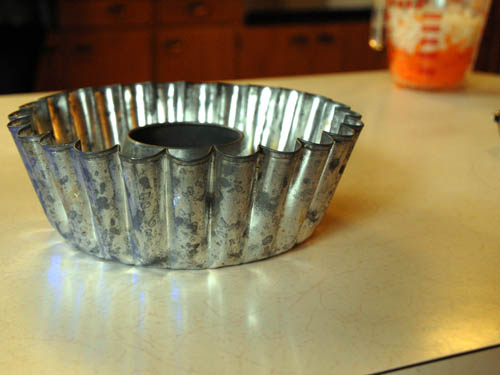

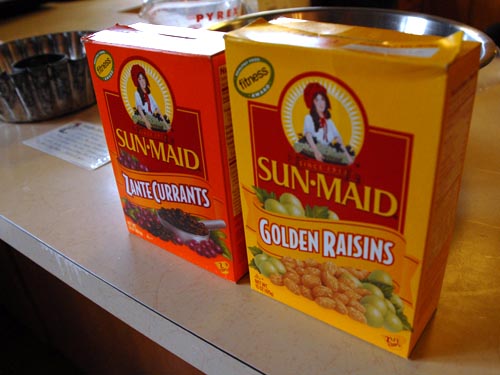
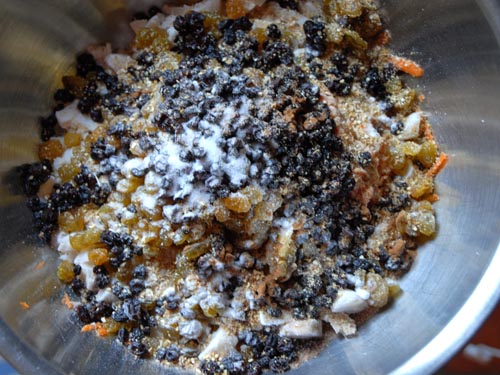

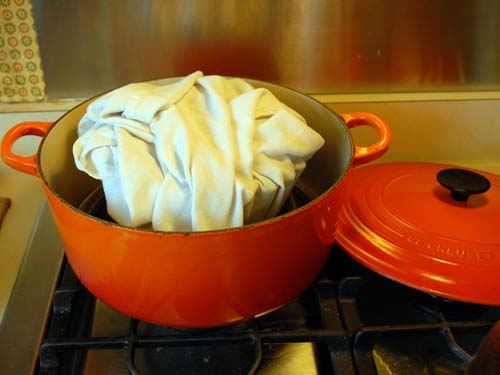
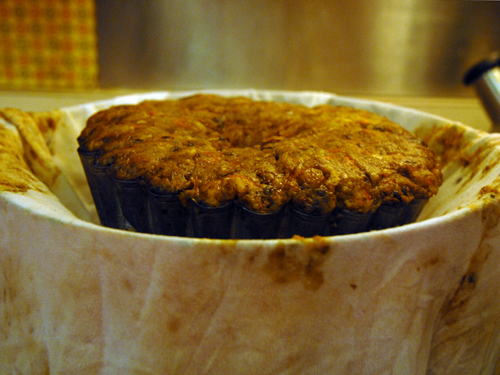
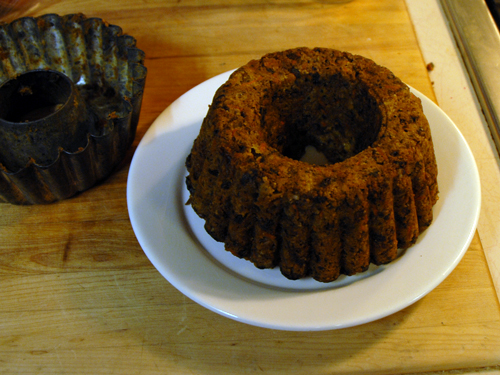
Thanks for this remembrance of your grandmother! I too have fond memories of times spent with her and your grandfather. Great food, fun jokes – great people.